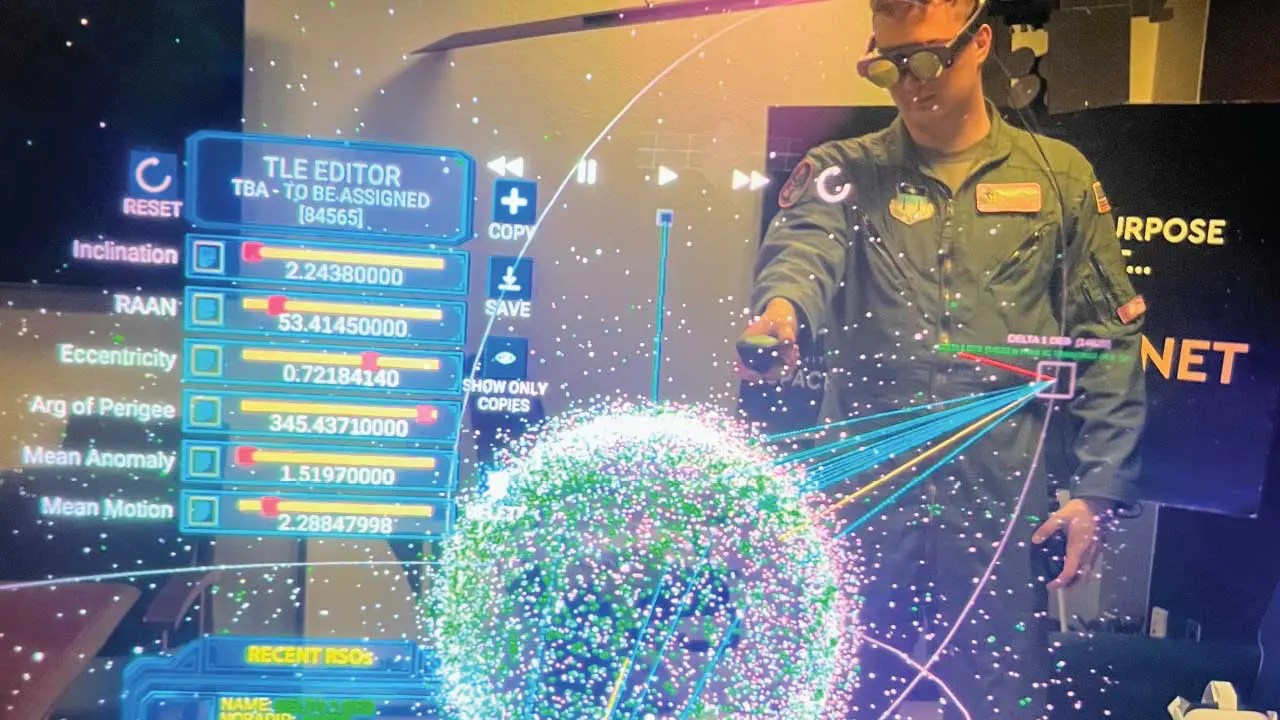
In an era where space has become a fiercely contested domain, the U.S. Space Force faces the formidable challenge of training its personnel to excel in an environment where real-world experience is limited. As such, the military branch is leveraging advanced technologies to revolutionize its training methods, preparing guardians for the intricacies of space operations in the face of evolving threats while their expanding role.
Since its creation in 2019, the U.S. Space Force has witnessed a significant transformation in its mission. Beyond conventional satellite operations, it must now contend with a broad spectrum of challenges, including electronic jamming, cyberattacks, ground-launched missiles, on-orbit grappling, and directed energy weapons. This shift underscores the increasing complexity of space operations, especially within the context of great power competition involving China and Russia.
Training personnel for space operations presents unique challenges. Sending trainees into space for practical experience is often infeasible, necessitating innovative solutions that bridge the gap between theoretical knowledge and hands-on proficiency.
To address these challenges, the Space Force is embracing the immersive technologies of virtual, augmented, and mixed realities.
Virtual reality creates computer-generated environments that enable trainees to realistically simulate space scenarios and interactions. Augmented reality, meanwhile, overlays digital information onto the real world, providing real-time data and visual aids related to the space environment.
Mixed reality combines physical and virtual elements, allowing trainees to interact with both real and simulated objects and environments.
An exemplary initiative is the Azimuth program, introduced by the Space Force’s Space Training and Readiness Command. Azimuth takes a multifaceted approach to prepare future guardians, incorporating academic instruction, zero-gravity experiments, rocket and satellite construction, and immersive mixed-reality training as described by the Space Force.
“Kwyn Solar” also represents a milestone in the Space Force’s technological integration. This augmented and mixed reality tool provided by Charles River Analytics utilizes military space object data to create an interactive space environment within augmented reality goggles. Trainees can explore satellite details, orbital paths, origins, and ground station locations, enhancing their comprehension of the space domain.
These advanced training methods aim to revolutionize space education. Trainees can now visualize and interact with space objects and scenarios, surpassing the limitations of traditional textbooks and two-dimensional models. This immersive training goal is designed to equip guardians with the skills and knowledge necessary to navigate the complexities of space operations effectively.
The development of immersive technologies continues, according to the Space Force, and they are becoming more accessible. With lighter and more affordable headsets and standardized software and hardware, these technologies are poised to play a significant role in space education. The incoming generation of junior officers and enlisted guardians, being digital natives, may more easily adapt to these tools, ensuring a seamless transition.
In the years to come, the Space Force’s adoption of proliferated constellations may further influence training programs. The Space Development Agency’s Proliferated Warfighter Space Architecture, a vast constellation in low Earth orbit, will require advanced training tools for efficient management and automation. Artificial intelligence and machine learning is expected to be instrumental in managing these constellations with minimal staff, according to those close to the agency.
The Space Force has committed to a culture of continuous improvement that will be crucial in adapting to these technological advancements. Technology alone is not an enabler; it is the readiness of the forces using that technology, most space insiders agree, that will determine success in the ever-evolving space landscape.
FTC: We use income earning auto affiliate links. More.



Comments